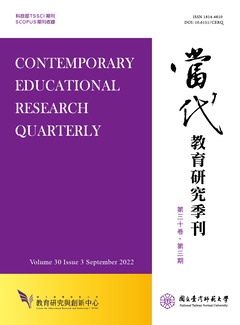

研究目的
「教育市場化」是美國聯邦當代政策導向之一,本文旨在探討1994-2017 年間柯林頓(B. Clinton)、小布希(G. W. Bush)及歐巴馬(B. Obama)三屆聯邦政府所提與中小學教育相關的七項教育改革法律、方案與計畫,釐清自由市場理念引入後聯邦教育職權與公共教育目的的變化,再分析比較法規內涵與變化,最後討論社會對政策評價、影響政策推動因素及其對公立中小學教育的影響與啟示。
研究設計/方法/取徑
本研究屬歷史研究,從時間發展角度,先以史料及前人研究說明美國公共教育制度發展和聯邦教育角色、公共教育目的的關聯,再以史學方法及文件分析法,比較 1994 年至 2017 年間,聯邦政府所推和中小學「教育市場化」有關的公共教育制度政策;所用史料除法律、方案與計畫外,亦有官方的教育報告書、小冊子、歷年教育統計資料及政策實施相關數據等一手史料。
研究發現或結論
本文以構成教育市場化機制的「學校選擇」、「高素質」及「績效責任」三要素,分析比較三屆聯邦政府對公共中小學教育的改革措施。研究發現聯邦政府以增設特許學校落實「學校選擇」,再訂定統一學術標準與評量要求「高素質」,最後將「績效責任」的對象由學校擴至教師。
對此,支持者認為,透過市場競爭可改善現有公立學校的素質不佳,達到優勝劣汰的效果;反對者則擔心市場化終會導致教育的私有化,甚至威脅到傳統公共教育制度的存在,對弱勢群體不利,進而加劇社會不公平。造成評價兩極化主因是前者強調「卓越」,後者關注「公義」,但兩者都忽略原有制度應兼顧卓越與公義的平衡。另外,相關政策深受新右派理念和「公益創投」(venture philanthropy)的影響。
研究原創性/價值
以往對美國教育市場化改革的研究多關注個別法案、計畫或議題,較少從歷史發展觀點,探討歷任聯邦政府所提法規的市場化內涵和措施差異。本文透過對聯邦七項法規的比較與分析,釐清含自由市場理念政策的變化,發現30年間聯邦政府的教育職權逐漸增強,偏離地方分權傳統;又因三屆聯邦政府均聚焦社會效率、強調卓越,公立中小學教育受到市場機制影響,對公義的關注有所偏移。至於影響相關政策實施的力量,除民主共和兩黨均認同新右派理念,「公益創投」也是推手,此均為之前研究所未言。
教育政策建議或實務意涵
美國近 30 年教育改革經驗顯示,為追求卓越引進市場機制,可能影響中小學教育對社會正義的維護。美國教育市場化改革的經驗可借鑑處有二:一、學校選擇上,教育市場化可供家長另種選擇,以改善整體教育品質,但須做適當規範且徐圖之,以免產生雙軌制而造成教育機會不均等。二、提高素質和績效責任上,應掌握其目的為學力監測與學習問題診斷,而非考核學校及教師績效,更不宜偏重少數學科,才能提升教育品質。
Purpose
"Educational marketization" has been a key policy direction in contemporary U.S. federal governance. This study examines seven educational reform laws, programs, and initiatives related to primary and secondary education proposed by the Bill Clinton, George W. Bush, and Barack Obama administrations between 1994 and 2017. It aims to clarify how the introduction of free-market principles influenced the federal government’s educational authority and the objectives of public education, analyze the evolution of policy frameworks, and discuss societal evaluations of these policies, factors affecting their implementation, and their implications for public primary and secondary education in Taiwan.
Design/methodology/approach
As a historical study, this research first contextualizes the development of the U.S. public education system and the federal government’s evolving role through historical documents and prior scholarship. It then employs historiographical methods and document analysis to compare market-oriented public education policies enacted during the specified period. Primary sources include laws, programs, initiatives, official educational reports, pamphlets, historical educational statistics, and policy implementation data.
Findings/results
The study analyzes reforms through three core components of educational marketization: school choice, high-quality standards, and accountability. Key findings reveal that the federal government promoted school choice through charter school expansion, enforced uniform academic standards and assessments to ensure "high quality," and expanded accountability measures from schools to individual teachers.
Supporters argue that market competition improves underperforming public schools through a "survival of the fittest" mechanism. Critics, however, warn that marketization risks privatizing education, threatening the traditional public education system, disadvantaging marginalized groups, and exacerbating social inequity. Polarized evaluations stem from differing priorities: proponents emphasize excellence, while opponents prioritize equity, both overlooking the need to balance these dual objectives. Additionally, policies were heavily influenced by New Right ideology and venture philanthropy.
Originality/value
Previous studies on U.S. educational marketization often focus on individual laws, programs, or issues, lacking a historical perspective on policy evolution across administrations. By comparing seven federal policies, this study clarifies shifts in market-oriented principles, revealing a 30-year trend of expanding federal educational authority that diverges from traditional local decentralization. It also highlights how the focus on social efficiency and excellence under three administrations shifted public education away from equity. Furthermore, the role of bipartisan support for New Right ideals and venture philanthropy in driving policy implementation—previously underexplored—is emphasized.
Implications for policy/practice
The U.S. experience over the past three decades demonstrates that prioritizing market mechanisms for excellence risks undermining educational equity. Two lessons emerge:
1. School Choice: While marketization offers parents alternatives to improve overall quality, it requires careful regulation to prevent dual-track systems and unequal educational opportunities.
2. Quality and Accountability: Standards and accountability should focus on academic monitoring and diagnosing learning gaps, rather than evaluating school or teacher performance. Overemphasizing narrow subjects should be avoided to ensure holistic quality enhancement.

This work is licensed under a Creative Commons Attribution-NonCommercial 3.0 Taiwan License.
Center for Educational Research and Innovation, National Tawain Normal University
162, Ho-Ping East Rd, Sec. 1, Taipei, Taiwan | Tel:+886-2-7749-3670 | E-mail: cerecerq@gmail.com
CERI | NTNU | E-mail Alerts | Open Journal System
© 2014 CERI-NTNU
